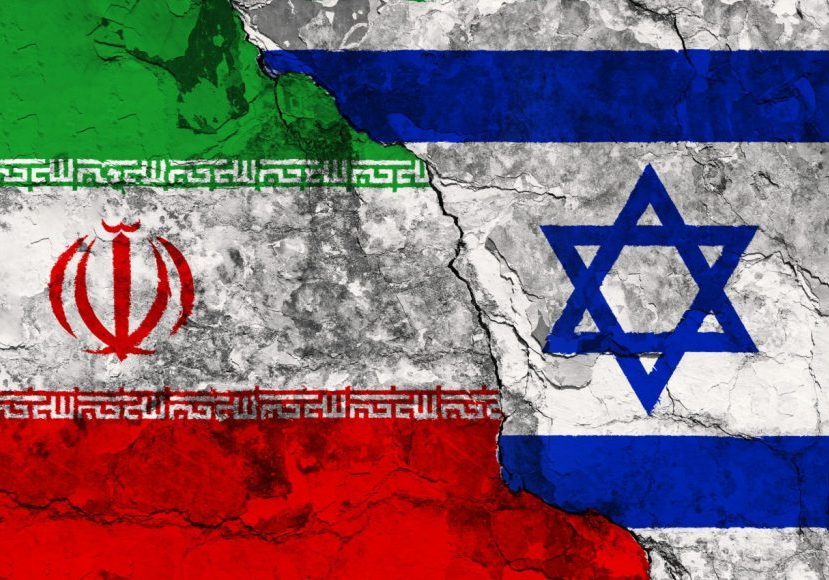Australia/Israel Review
Editorial: Bumps in the Roadmap
Feb 1, 2008 | Colin Rubenstein
Colin Rubenstein
A major objective of US President George W. Bush’s recent visit to Israel and the Palestinian territories, to maintain the momentum of November’s Annapolis peace conference, is under severe strain. As recent events in Gaza highlight, the aim of having at least a preliminary Israeli-Palestinian peace framework in place by the end of 2008 is an ambitious one, with many obstacles to be overcome if it is to be achieved.
These obstacles have little to do with the question of Israeli settlements, which garnered the lion’s share of media coverage – and blame – during Bush’s visit.
Since the Camp David talks of 2000, it has been widely assumed that the larger settlements, which often abut major population centres inside Israel, will be part of Israel under any future agreement. This is fully consistent with UN Security Council Resolution 242, which deliberately called on Israel to withdraw from “territories”, rather than “all territories”, seized in the war.
Therefore, controversial Israeli proposals to build additional housing in some large existing settlements, to accommodate natural growth and involving no acquisition of additional land, should not be seen as having any significant effect on peace plans or prospects.
Those who label the settlements as the biggest obstacle to peace need to review recent history. Israel’s complete withdrawal from the Gaza Strip in August 2005, with all settlements dismantled and all settlers removed, did not yield peace. Instead, over 4,000 rockets and mortars have been fired by Palestinian terrorist groups at Israeli towns, including Ashkelon, and have recently even intensified. In mid-January, more than 230 rockets were fired, largely by Hamas, in the space of just four days. More than 200,000 Israelis are within rocket range of Gaza.
Clearly, these on-going terrorist attacks and the internecine civil war between Palestinian President Mahmoud Abbas’ Fatah faction and Hamas are more profound stumbling blocks to any two-state outcome. Hamas, which completely controls the Gaza Strip, is a terrorist organisation that remains committed to Israel’s destruction. Its leadership has steadfastly refused to recognise Israel’s right to exist, stop attacks on Israel, or abide by previous Israeli-Palestinian peace agreements.
Hamas clearly is not a partner for peace, as evidenced by the fact that the “Quartet” – the US, UN, EU and Russia – has adopted a policy of isolating Hamas unless and until it agrees to abide by these limited conditions. So far, Hamas has decided to allow Gazans to live in misery rather than compromise its “principles”.
Hamas’ rejectionist stance is more than symbolism. Its grip on Gaza means that Israel’s peace interlocutor – Abbas – cannot speak for the 1.3 million Palestinians living there and cannot impose a peace agreement – even if one is agreed to – on Hamas.
Tellingly, Abbas told Bush during his visit that he (Abbas) could do nothing about the daily rocket attacks fired from Gaza, since it is controlled by Hamas. But Israel, while seeking to avoid a major ground operation, must still act to protect its citizens, leading to confrontations like the one in Gaza on Jan. 15, in which 16 Hamas terrorists were killed after firing on Israeli soldiers in pursuit of mortar crews. The effort to halt the incessant rocket attacks led to Israel’s decision to temporarily cut-back the fuel it supplies to Gaza. After the tactic achieved some success – the number of rockets fired after the fuel-cut dropped significantly – Israel resumed providing fuel.
Importantly, fuel can be diverted to other purposes. For example, Palestinian Authority officials have accused Hamas of stealing fuel from hospitals to use in its vehicles. Moreover, even while Israel cut back on fuel supplies, it continued to provide Gaza with electricity at routine levels, 70% of Gaza’s electricity. And Israel pledged, as it has repeatedly, not to allow the situation in Gaza to deteriorate into a humanitarian disaster.
Israel also allowed hundreds of Palestinians and their families to cross into Israel for medical treatment – 130 on Jan. 21 alone. Meanwhile, Egypt sent riot police to bolster security at its border crossing with Gaza rather than allow sick Gazans into Egypt, before Hamas blasted down most of the border wall and allowed Palestinians to spill en masse into Egypt.
Despite misplaced criticism, it is clear that Israel is providing more assistance than any other country would under similar circumstances. In the face of an implacable enemy, Israel continues to provide food, fuel, electricity, medicine and other humanitarian aid to Gazans.
Other severe obstacles remain as well. Members of the Palestinian Security Forces from Abbas’ Fatah faction were implicated in the murders of several Israelis in the West Bank at the time of Annapolis. Similarly, Abbas has done nothing to address the anti-Israel and antisemitic incitement that is rife within official PA-controlled media. Thus, immediately after Annapolis, maps broadcast on Palestinian television labelled all of Israel, the West Bank and Gaza as “Palestine”, completely obliterating Israel.
This propaganda delegitimising Israel feeds into the Palestinian refusal to recognise Israel as a Jewish state and demands for an unprecedented and impossible unlimited “right of return” to Israel rather than a future Palestine. This would mean the end of Israel as a Jewish state, and bury a “two state” resolution.
Yet despite all these barriers, there is still hope for progress toward peace. Olmert and Abbas have developed a good rapport and seem truly committed to reaching an agreement. Although both leaders are somewhat weak politically, each can take some steps that can begin to rebuild the trust between the two sides and, in the process, erode Hamas’ position in Gaza. As recent events continue to demonstrate, however, the path ahead is bumpy, precarious and challenging.
Tags: Iraq






